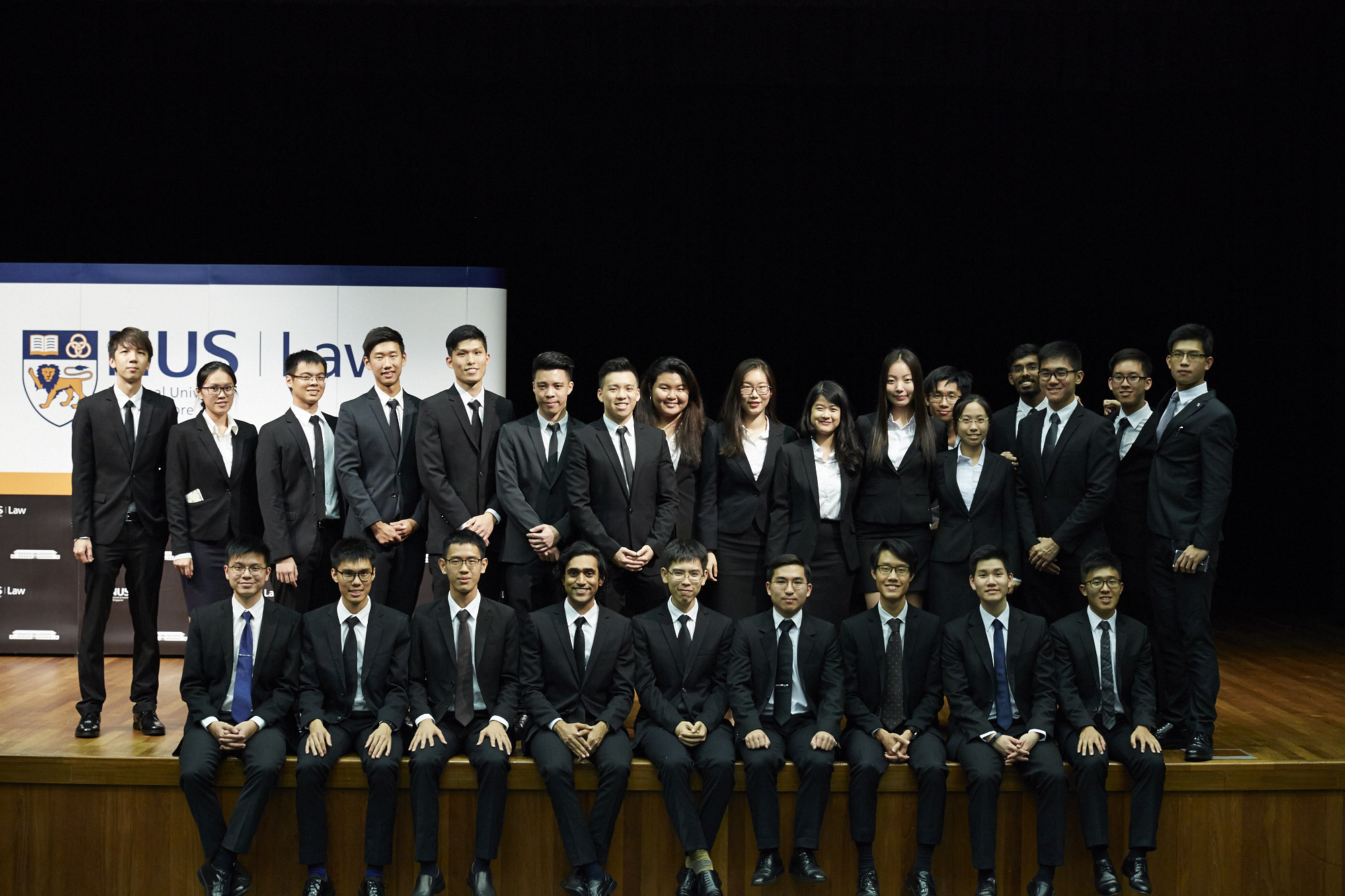I. Introduction
In Vellama d/o Marie Muthu v Attorney-General1 [Vellama], the Court of Appeal held that Article 49 of the Constitution of Singapore,2 which deals with the filling of vacant Parliamentary seats, imposed a duty on the Prime Minister to call a by-election “to fill casual vacancies of elected MPs which may arise from time to time”.3 However, despite the supposed universality of its conclusion, the Court of Appeal was quick to confine its judgment to vacancies arising in the context of Single-Member Constituencies (“SMCs”), having observed that separate legislative provisions and rules applied to instances where vacancies arose in a Group Representation Constituency (“GRC”).4 It remained an open question then as to what the proper scope and effect of Article 49 was on GRCs.
The recent High Court decision of Wong Souk Yee v Attorney-General5 [Wong Souk Yee] has since sought to address that question by holding that by-elections for a GRC would only be held in the event that all Members of Parliament (“MPs”) of that GRC have vacated their seats. This article will analyse the reasoning and the methodology of the High Court in reaching its conclusion and will discuss the implications of the judgment in the realm of constitutional interpretation.
II. Background
In Wong Souk Yee, the Applicant sought mandatory orders requiring that the MPs for the Marsiling-Yew Tee GRC vacate their seats in Parliament and that the Prime Minister advise the President to issue a writ of election for the Marsiling-Yew Tee GRC.6 Her action was founded on the basis that a vacancy had arisen in the Marsiling-Yew Tee GRC when one of its MPs, Madam Halimah Yacob, vacated her seat in Parliament on 7 August 2017 to contest in the 2017 Presidential Election.7 Since Madam Halimah’s departure, the Marsiling-Yew Tee GRC continued to be represented by its three remaining MPs from the People’s Action Party.8
The Applicant further sought declaratory orders in the alternative that s 24(2A) of the Parliamentary Elections Act9 [PEA] be interpreted as requiring all the MPs of a GRC to vacate their seats (i) when one or more MPs of the GRC vacate their seats; or (ii) in the alternative, when the only MP in the GRC who belongs to a minority community vacates his or her seat, so as to ensure consistency between s 24(2A) of the PEA and Article 49 of the Constitution.10 On the flip side, if such an interpretation was not possible, s 24(2A) was to be declared void for inconsistency with the Constitution as per Article 4 read with Article 49.11
III. The High Court’s Decision
A. The Mandatory Orders
The Applicant justified her claim for the mandatory orders on three grounds. Firstly, she contended that Article 49(1) of the Singapore Constitution 12 requires the calling of a by- election in a GRC when the seat of an Elected MP has become vacant for any reason other than the dissolution of Parliament. Secondly, the Applicant argued that Article 39A(2) of the Constitution13 requires that a GRC be represented by an MP belonging to a minority community, until the dissolution of Parliament. Last but not least, it was argued that a by-election should be called so as to give effect to the voters’ right to be represented by an elected MP of their choice.14
Much of the judicial debate in Wong Souk Yee centred on the Applicant’s first ground, which in effect concerned the proper interpretation of Article 49. For completeness, the full text of Article 49 reads as such:
Filling of vacancies
49.—(1) Whenever the seat of a Member, not being a non-constituency Member, has become vacant for any reason other than a dissolution of Parliament, the vacancy shall be filled by election in the manner provided by or under any law relating to Parliamentary elections for the time being in force.
(2) The Legislature may by law provide for —
(a) the vacating of a seat of a non-constituency Member in circumstances other than those specified in Article 46;
(b) the filling of vacancies of the seats of non-constituency Members where such vacancies are caused otherwise than by a dissolution of Parliament.
Article 49 in its present form was left untouched by the 1988 Amendments15 to the Constitution implementing the GRC system. Prior to that, the last substantive change to Article 49 was in 1984 concerning the introduction of Non-Constituency Members of Parliament.16 No other amendments were made to Article 49 since then. Indeed, when Article 49 was first enacted in the 1980 Reprint of the Constitution, 17 the GRC system was not even in existence. As Chua Lee Ming J succinctly identified, the true question that the High Court had to address, was the correct interpretation of Article 49(1) was in relation to GRCs.18 The earlier decision of Vellama had only addressed the scope of Article 49 in the context of an SMC.
The Applicant argued, on a plain reading of Article 49(1), that a by-election had to be called whenever a Parliamentary seat was rendered vacant, regardless of whether the seat belonged to an SMC or a GRC.19 Thus, whenever a vacancy arose in a GRC, the remaining MPs would have to resign their seats in order for a writ of election to be issued for the entire GRC. This would have to occur even if these MPs had no intention to vacate their respective seats, and where the conditions for disqualification or termination under Articles 45 and 46 were not made out.20 This interpretation of Article 49 was necessary in order to give substantive effect to the requirement in s 27A of the PEA 21 that elections in GRCs had to be held between teams of candidates.
The Attorney-General submitted in response that Article 49(1) only required that a by-election in a GRC be held if all the MPs of that GRC vacated their seats mid-term or, in the alternative, that Article 49(1) did not apply to GRCs but only to SMCs.22
In accepting the Attorney-General’s submissions, Chua J noted that the Applicant’s purported interpretation of Article 49(1) was a legal improbability given that there was no provision in Articles 45 and 46 of the Constitution requiring that the remaining MPs of a GRC had to vacate their seats or were disqualified from holding their seats in the event one of their fellow MPs vacated his or her seat.23 This is correct insofar as the Constitution is silent on such a contingency occurring whereas s 24(2A) of the PEA24 specifically mentions that the writ of election would only be issued in the event all MPs in a GRC have vacated their seats. To imply another constitutional ground on which an MP’s seat (or a group of MPs in this case) would either be vacated or the MP be disqualified from becoming a Member of Parliament would be tantamount to reading-in additional provisions in the Constitution by the Judiciary in the absence of clear or express words to that effect.25
Chua J further held in favour of the Attorney-General’s interpretation of Article 49(1) on the basis that either an updating or rectifying construction could be applied to Article 49(1) to take into account the subsequent legislative amendments to the Constitution and the Parliamentary Elections Act, thereby allowing for an interpretation of Article 49(1) to mean that by-elections in a GRC would only be possible if all MPs had vacated their seats. 26
An updating construction is first and foremost a rule of statutory interpretation that is meant to provide guidance “as to the legislator’s prima facie intention regarding the legal meaning of the enactment.”27 For an updating construction to take effect, the Act in question must first have been an Act “that is intended to develop in meaning with developing circumstances”.28 Once this has been established, the updating construction operates by presuming that “Parliament intends the court to apply to an ongoing Act a construction that continuously updates its wording to allow for changes since the Act was initially framed”.29 In Singapore, the rule of updating construction was first expressly adopted in Comptroller of Income Tax v MT 30 [CIT]. This was in turn cited in Wong Souk Yee with approval,31 as part of a three-stage framework (the “CIT Framework”).32
In applying the CIT Framework to the present case, Chua J determined that since Parliament expressly intended for by-elections in a GRC to be held only in the event that all seats in that GRC had been vacated33 and had made its intentions manifest by amending the Constitution to include Article 39A, an updating construction could be applied to Article 49(1) to reflect the changes effected by Article 39A.34
B. Difficulties with Applying an “Updating Construction”
With respect, the learned Judge did not appear to have adequately considered the nature of the legislation he was required to interpret in accepting the applicability of the doctrine of updating construction. As previously stated, the presumption of updating construction is a rule of statutory interpretation. It owes its development to the peculiar characteristics of the English legal system, where there exists no written Constitution and the doctrine of Parliamentary supremacy prevails.35 Given such differences between our legal systems, the Singapore courts ought to guard against resorting to ordinary canons of statutory interpretation too quickly in order to interpret a written constitution that proclaims itself to be the supreme law of the land. To infelicitously import rules of interpretation and construction for ordinary statutes wholesale into the realm of constitutional interpretation runs the risk of treating the Constitution as being no different from an ordinary piece of statute, even if such an interpretation is justified as giving effect to the purpose of the affected legislation.36
Even if one accepts that the rule of updating construction can be applied in the context of constitutional interpretation, it is arguable that at the third stage of the CIT Framework, the application of an updating construction to Article 49(1) would itself have entailed a substantive change to the provision. With respect, a constitutional amendment may have been the more desirable solution. As the Court of Appeal in Vellama so held, Article 49(1) in its present form mandates that the Prime Minister has to call by-elections “to fill casual vacancies of elected MPs that may arise from time to time”.37 This mandatory requirement is not subject to qualifications whatsoever on a plain reading of the text. Neither is it reflected in the 1988 Constitutional Amendment that Parliament intended for by-elections in GRCs to be subject to the requirement that all MPs vacate their seats first. Not even Article 39A itself makes any reference to the requirements for by-elections to GRCs, save that they be held only on a “team” basis.38 Furthermore, the PEA’s unique requirements that must be met for a by-election in a GRC are themselves a significant amendment to the existing constitutional provision on by-elections since the departure of one or more MPs from a GRC would not trigger the by-elections mechanism unless every MP has vacated his or her seat. The result is that in practice, Parliamentary vacancies in a GRC would be left unfilled until the remaining MPs’ terms of office ends.
That being the case, the proper remedy would lie with Parliament to amend Article 49 itself to accommodate s 24(2A) of the PEA. As Menon JC observed in CIT, where a “significant legislative change has been effected in the first statute such that its importation into the second statute may have quite substantial effects, the court should ordinarily be slow to apply an updating construction to the second statute”.39
C. Rectifying Construction: A Trojan Horse of Judicial Legislation?
A similar argument may be made about the Court’s willingness to apply a rectifying construction towards Article 49(1). Rectifying construction operates on the basis that “the legislator intends the court to apply a construction which rectifies any error in the drafting of the enactment”.40 Its effect is similar to that of an updating construction, and essentially involves the addition or substitution of words into the statute to rectify the error or omission in the legislative drafting. In accepting the Attorney-General’s argument, Chua J reasoned that Parliament’s intention regarding by-elections in GRCs was manifested by the adoption of s 24(2A) of the PEA.41 That Article 49(1) was not also amended to reflect this change in the law was merely an omission on the Legislature’s part which in no way detracted from the express intention of Parliament.42
With respect, it is still difficult to reconcile Chua J’s holding with the fact that the PEA is itself a piece of ordinary legislation that must inevitably rank below the Constitution in terms of legal hierarchy.43 Constitutional supremacy as reflected in Article 4 mandates that any ordinary legislation that would at first blush be inconsistent with the Constitution ought to rendered void to the extent of the inconsistency unless the Constitution itself has been expressly amended.44 S 24(2A) arguably constitutes a marked deviation from the constitutional duty in Article 49 to fill Parliamentary vacancies through the use of elections. It follows that an amendment to Article 49(1) is necessary to reflect this change, and in the absence of such, s 24(2A) is void for inconsistency qua Article 49(1).45
Having accepted the Attorney-General’s interpretation of Article 49(1), the High Court proceeded to consider the Attorney-General’s alternative interpretation that Article 49(1) only applied to SMCs and not to GRCs. In agreeing with the Attorney-General’s alternative interpretation, Chua J reiterated his earlier holding that the legislative purpose was clear in that:
“[A]ll elections (including by-elections) in any GRC shall be held on a basis of such number of candidates as designated for that constituency by the President, and no by- election needs to be held to fill any vacancy in a GRC unless all the Members in that GRC have vacated their seats.”46
The Attorney-General’s alternative interpretation of Article 49(1) was thus adopted as the correct one that “furthers the legislative purpose”.47 Yet it seems unclear whether the legislative purpose that the High Court was referring to was the specific purpose of Article 49(1) or the general purpose of Part VI of the Constitution or even the Constitution as a whole. If Chua J was referring to the specific purpose of Article 49(1), then insufficient consideration was devoted to ascertaining the legislative purpose of Part VI of the Constitution, as per the test in Tan Cheng Bock v Attorney-General48 [Tan Cheng Bock]. If, however, the learned Judge was referring to the legislative purpose of Part VI of the Constitution, his definition of the legislative purpose would appear to be an unduly narrow one. One must consider that Part VI deals wholly with the functions, organisation as well as composition of the Legislature of Singapore in its entirety, rather than simply on by-elections alone.49
Since the Applicant’s claim could not succeed on her first ground, the High Court proceeded to consider the remaining two grounds underpinning her claim for mandatory orders. However, as the Applicant clarified in her oral submissions, her case was only that a by-election in a GRC had to be called if any seat in the GRC was vacated regardless of whether it was held by an MP belonging to a minority community or otherwise. She thus conceded her second ground that Article 39A(2) of the Constitution requires that a GRC be represented by an MP belonging to a minority community until the dissolution of Parliament.50 The High Court further rejected her third ground of argument, that there existed an implied right by voters to be represented by an elected MP of their choice until the dissolution of Parliament.51
D. The Declaratory Orders
Given that the Applicant’s alternative claim for declaratory orders was founded on similar grounds as her claim for mandatory orders, the High Court rejected the Applicant’s alternative claim for the same reasons that it gave in rejecting the Applicant’s primary claim – namely that the Applicant’s proposed interpretation of Article 49(1) was patently incorrect. 52 Nevertheless, this author contends that, given the legal impossibility of the Applicant’s interpretation of Article 49(1) and the inherent risks of applying either an updating or rectifying construction to the Constitution, the irresistible conclusion appears to be that s 24(2A) of the PEA is simply inconsistent with the Constitution and thus void. It is unfortunate that the High Court did not canvass this particular point in greater detail, being content to simply reject it as stemming from the Applicant’s incorrect interpretation of Article 49(1).
IV. Implications for Constitutional Interpretation
Wong Souk Yee appears to reinforce the proposition that in future cases, the purposive approach53 will increasingly become the dominant method of constitutional interpretation.54 Coming on the back of the earlier decision of Tan Cheng Bock, which was itself heavily cited in Wong Souk Yee, it would seem that future cases dealing with questions of constitutional interpretation will inevitably concern themselves with attempting to ascertain the purpose of a particular Constitutional provision or a part of the Constitution. Yet, two potential issues have arguably arisen from the present case that necessitate further clarification from the Singapore courts.
Firstly, the apparent willingness of the High Court in Wong Souk Yee to resort to interpretive doctrines for ordinary legislation in interpreting the Constitution intimates their general applicability across different types of legislative instruments. It is true that Tan Cheng Bock itself appeared to accept the applicability of such rules in the context of constitutional interpretation.55 However, care must be taken against bluntly importing these rules into the separate realm of constitutional interpretation, especially since they were developed by the Courts in common law, and intended for ordinary statutes. A liberal use of such rules and canons runs the risk of the courts straying into the field of constitutional amendment under the guise of interpretation, especially if such rules have the practical effect of injecting additional words and expressions into the Constitution when none previously existed. Further clarification from the Court of Appeal as to the ambit and applicability of these rules would be greatly welcomed.
Secondly, this increasing acceptance of the purposive approach as the primary method of constitutional interpretation poses a corollary question: whether the alternative rights-based approach, as laid out in the long line of cases stretching from Minister of Home Affairs v Fisher 56 [Fisher] to Ong Ah Chuan v Public Prosecutor 57 [Ong Ah Chuan] and then to Taw Cheng Kong (which cited both Fisher and Ong Ah Chuan with approval), will continue to be of any particular relevance in field of constitutional law. It will be recalled that in Ong Ah Chuan, which cited Fisher and referred to the Singapore Constitution, the Privy Council held that “the way to interpret a Constitution on the Westminster model is to treat it not as if it were an Act of Parliament but “as sui generis, calling for principles of interpretation of its own, suitable to its character...without necessary acceptance of all the presumptions that are relevant to legislation of private law””.58
It is arguable that if the so-called sui generis approach in Ong Ah Chuan were applied to the present case, a different result might have been reached by the High Court with regards to the interpretation of Article 49(1). Presumably, the Applicant’s argument that there existed an implied right to representation within the Constitution would’ve been accorded more weight in determining the proper construction of Article 49(1).
While Ong Ah Chuan was decided before the purposive approach was expressly adopted as part of Singapore law, it remains good law nevertheless and presents a possible alternative approach towards constitutional interpretation. However, it will be necessary to re-examine whether the so-called sui generis approach in Ong Ah Chuan ought to remain part of Singapore case law in light of the increasing resort to the purposive approach in constitutional interpretation.
V. Conclusion
Wong Souk Yee sought to address the latent ambiguity surrounding the scope of the by-elections clause in Article 49 of the Constitution vis-à-vis the GRC scheme by holding that the provision could be updated or rectified to incorporate changes made elsewhere to existing electoral law. While the High Court’s conclusion appears to be technically correct based on the express wording of existing legislation regarding Parliamentary elections as well as an unduly broad application of the purposive approach in interpreting Article 49(1), the reasoning of the High Court has arguably opened a can of worms regarding the proper interpretation of constitutional provisions. The decision also runs a noticeable risk of undermining the very notion of constitutional supremacy. While it remains to be seen whether an Appeal will be brought, further clarification from the Court of Appeal as to the abovementioned points of contention would be greatly welcome.












